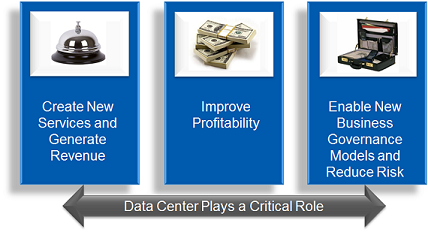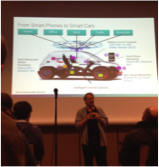




Global Participation. A few weeks ago, the OpenStack community gathered came in Paris for the Juno release of the OpenStack platform. The Foundation reported record attendance of 4600, many attending a Summit for the first time. Of those visiting Cisco’s booth: 68% came from Europe/Middle East/Africa/Russia; 18% from the Americas, 12% from Asia Pacific/Japan and 1% from Greater China.
Cisco Presenters. In his premiere breakout, “A World of Many OpenStack Clouds,” Lew Tucker, VP and CTO for Cisco Cloud Computing and Vice-Chair of the OpenStack Foundation, spoke about the future of cloud and how past experience building the Internet might be applied to building the Intercloud—the universe of clouds. Additional comments can be viewed in eWeek’s interview with Lew Tucker, where he discusses Cisco’s expanding support for OpenStack.
Cisco was a Gold Sponsor of the Summit and delivered eight technical presentations. If you missed the Summit, check out these links to video recordings of the Cisco sessions:
- Building a Cloud Career in OpenStack
- Group-Based Policy Extensions in OpenStack
- IPv6 Features in OpenStack Juno
- Panel: OpenStack Design Guide
- Panel: Tips & Tools for Building OpenStack Groups
- Scaling OpenStack in the Pre TripleO Service Cloud
- Under the Hood with Nova,Libvirt and KVM
- Using Ceilometer to Detect Fraud in an OpenStack Cluster
Hot Topics. Four years in, OpenStack has growing global support, a strong ecosystem of vendors, end-users running in production, and leading-edge companies willing to talk about their experience scaling OpenStack in their organizations. The number of new OpenStack core projects being initiated has tapered off and the Foundation reports that ten times as many bug fixes were contributed as new features in this most recent cycle, producing a stronger focus on stability.
Other topics trending up at the Paris Summit were:
- Software defined ‘X’ (with X equaling a wide variety of technologies and services)
- Federated clouds
- Docker/ Linux containers
Juno Release Highlights
- Formation of the new Sahara data processing project, which allows users to run Hadoop big data clusters in an OpenStack cloud
- Full integration of Swift cloud storage project, which allows users to define and apply different cloud storage policies
- Key improvements to the Neutron networking project to support Distributed Virtual Routing and IPv6 protocols, increasingly important in large scale deployments
- Enhancement to the Nova compute project to simplify recovery after a server failure
- Extension of the Keystone access and identity project to accommodate federated multi-cloud environments.
Keynote Speakers. Matt Haines, VP Cloud Engineering and Operations for Time Warner Cable (TWC), reviewed the work he oversaw in 2014 to deploy OpenStack infrastructure at scale to support the company’s strategy of delivering “any content, on any device, anywhere.” At TWC, an OpenStack cloud provides self-service IT infrastructure for devops activity. Haines consulted with Cisco in the planning phase when he was determining which IT services would be offered, the number of data centers that would be involved, how to design the provider networks, and how to stabilize the environment. His infrastructure is currently operating with what Matt called “enterprise stability at service provider scale.”
Other keynotes included Dr. Stefan Lenz, Manager of Data Center IT Infrastructure for BMW, who spoke about how BMW’s internally built private cloud had failed to provide the stability required across all of the projects that OpenStack covers, and Jose Maria San Jose Juarez, Chief of Innovation in Technology for BBVA Bank, who shared how a programmatic (software driven) approach to delivering IT infrastructure was critical for achieving the agility, speed, and reliability required to deliver industry-leading customer applications.
In addition to the customer keynotes, technical leaders from CERN, Comcast, Ericsson, Expedia, Intel, and Tapjoy delivered presentations on their OpenStack deployments.
Cisco Contributions. Cisco continues to lead contributions to the OpenStack Neutron networking project, summarized in the blog Cisco and OpenStack Juno Release, Part 1. Enhancements included improvements to Neutron plugin and driver integration and metering of key network services through OpenStack Ceilometer in order to support service level agreements and monitor performance. Cisco also contributed to other core OpenStack projects, summarized in the blog Cisco and OpenStack Juno Release, Part 2, which includes enabling configuration of IPv6 through OpenStack Horizon and increasing flexibility and security of SAN access through OpenStack Cinder. In addition to core work, Cisco also contributes code to incubation projects via GitHub/Stackforge. A high visibility project this cycle has been the effort to enable programmability of network infrastructure and services through group based policy. This approach is the basis of Cisco’s implementation of Application Centric Infrastructure (ACI), which delivers new levels of agility, speed and control for IT.
In addition to direct code contributions, Cisco provides plugins that ensure OpenStack distributions run smoothly on Cisco UCS servers and Cisco Nexus physical and virtual switches. The recent acquisition of Metacloud also allows Cisco to deliver OpenStack clouds-as-a-service, onsite at the customer, providing customers an alternative to building and managing private clouds themselves. In another step forward, Cisco is also building a global Intercloud ecosystem, in which clouds built on diverse hardware platforms can be easily connected to form highly-secure and efficient hybrid clouds.
For more information on OpenStack at Cisco, visit www.cisco.com/go/openstack and mark your calendars for the next OpenStack Summit May 18-20 in Vancouver, British Columbia.
CONNECT WITH US